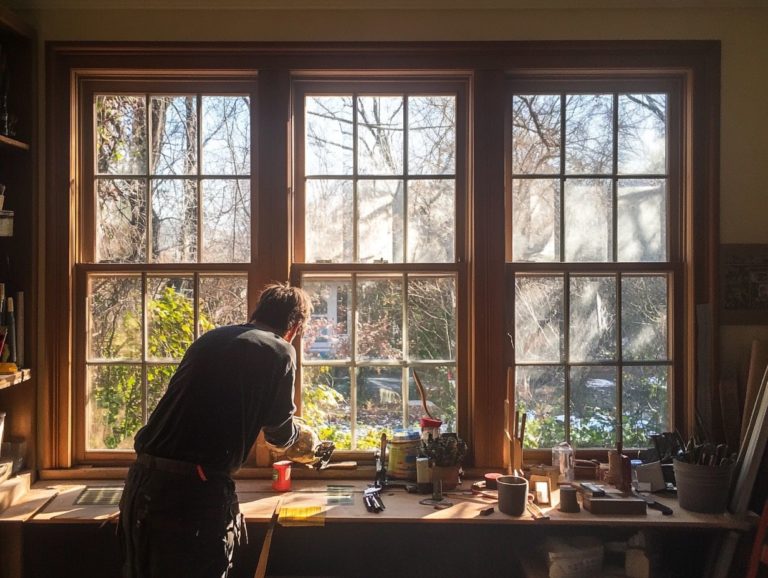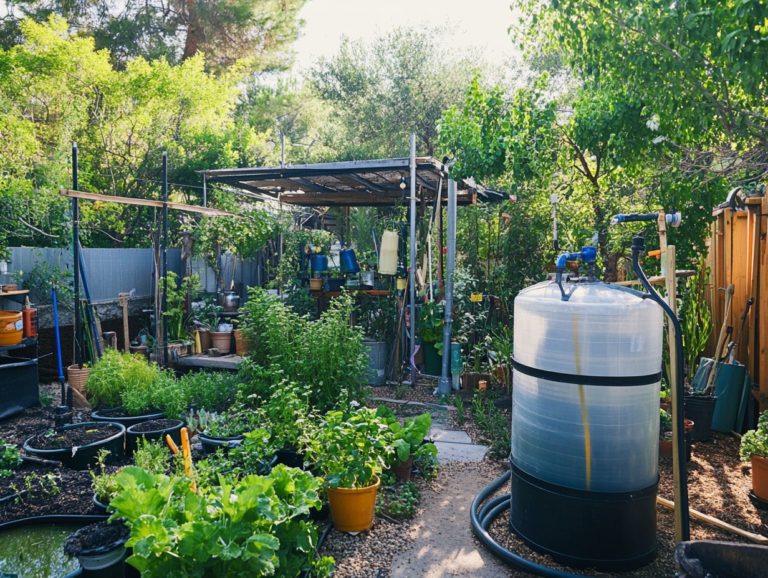Easy Steps to Create a Wind Turbine at Home
Are you intrigued by the idea of harnessing the power of wind to generate your own electricity?
Building a wind turbine at home is not only a fulfilling DIY project but also an excellent opportunity to reduce your energy costs while making a positive impact on the environment. You can use inexpensive materials like PVC pipe and metal tubing to build a generator that leverages wind power.
This article delves into the advantages of creating your own wind turbine. It outlines the essential materials you’ll need and offers a comprehensive step-by-step guide to navigate you through the construction process.
It also explains how to test, troubleshoot, and maintain your turbine. This ensures it operates at peak performance. Get ready to harness the power of renewable energy right from your backyard! Don t miss this chance to make a difference!
Contents
- Key Takeaways:
- Benefits of Creating a Wind Turbine at Home
- Materials and Tools Needed
- Step-by-Step Guide to Building a Wind Turbine
- Testing and Troubleshooting
- Maintenance and Upkeep
- Frequently Asked Questions
- What materials do I need to create a wind turbine at home?
- Do I need any special skills or knowledge to create a wind turbine?
- How much electricity can I generate with a homemade wind turbine?
- What is the ideal location to install a wind turbine at home?
- How much does it cost to build a wind turbine at home?
- Are there any safety precautions I should take when building a wind turbine at home?
Key Takeaways:

What is a Wind Turbine and How Does it Work?
A wind turbine is an impressive device that converts the kinetic energy of the wind the energy of moving air into mechanical energy, thanks to its large blades that rotate with the breeze. This mechanical energy is then transformed into electrical energy through a generator assembly, often incorporating advanced technologies like Ametek motors and DC generators.
Wind turbines stand as a cornerstone of renewable energy solutions, enabling sustainable power generation for a range of applications, from powering vehicle batteries to servicing an off-grid cabin.
The blades of the turbine are meticulously engineered to capture wind efficiently, typically boasting an aerodynamic shape that maximizes lift while minimizing drag. As the wind flows against these expertly designed blades, they rotate around a rotor connected to the generator assembly.
Inside the generator, components such as coils of wire and magnets collaborate to convert that mechanical motion into electrical energy. This rotation of the rotor induces an electromagnetic field, generating electricity that can be supplied to the grid or stored for future use.
By harnessing wind turbines, you significantly diminish greenhouse gas emissions, presenting a cleaner alternative to fossil fuels and playing a vital role in combating climate change all while tapping into a boundless resource that often goes unexploited.
Benefits of Creating a Wind Turbine at Home
Building a homemade wind turbine presents a wealth of advantages, most notably the potential for significant savings on your energy bills and a meaningful decrease in your environmental impact by utilizing renewable energy sources.
By tapping into wind power, you can generate your own electricity, resulting in reduced energy costs and increased energy independence while simultaneously playing a vital role in fostering a cleaner planet.
Start your journey to energy independence today and help the planet!
Cost Savings and Environmental Impact
Constructing your own DIY wind generator can lower your energy bills. It also benefits the environment by using renewable energy and reducing carbon emissions.
Generating electricity from wind power, and possibly adding solar power, helps you rely less on fossil fuels. This paves the way for a more sustainable future.
Your savings extend beyond the immediate benefits. By producing your own power, you gain long-term stability and security against rising energy costs.
Depending on the wind’s availability and your turbine’s efficiency, you might see a remarkable percentage drop in your energy bills.
Generating energy from wind significantly reduces greenhouse gas emissions. This leads to cleaner air and a healthier ecosystem.
Investing in a homemade wind turbine means saving money and fighting climate change. You’re also helping to create a greener planet for future generations by exploring 5 unique DIY projects to harness wind energy.
Materials and Tools Needed
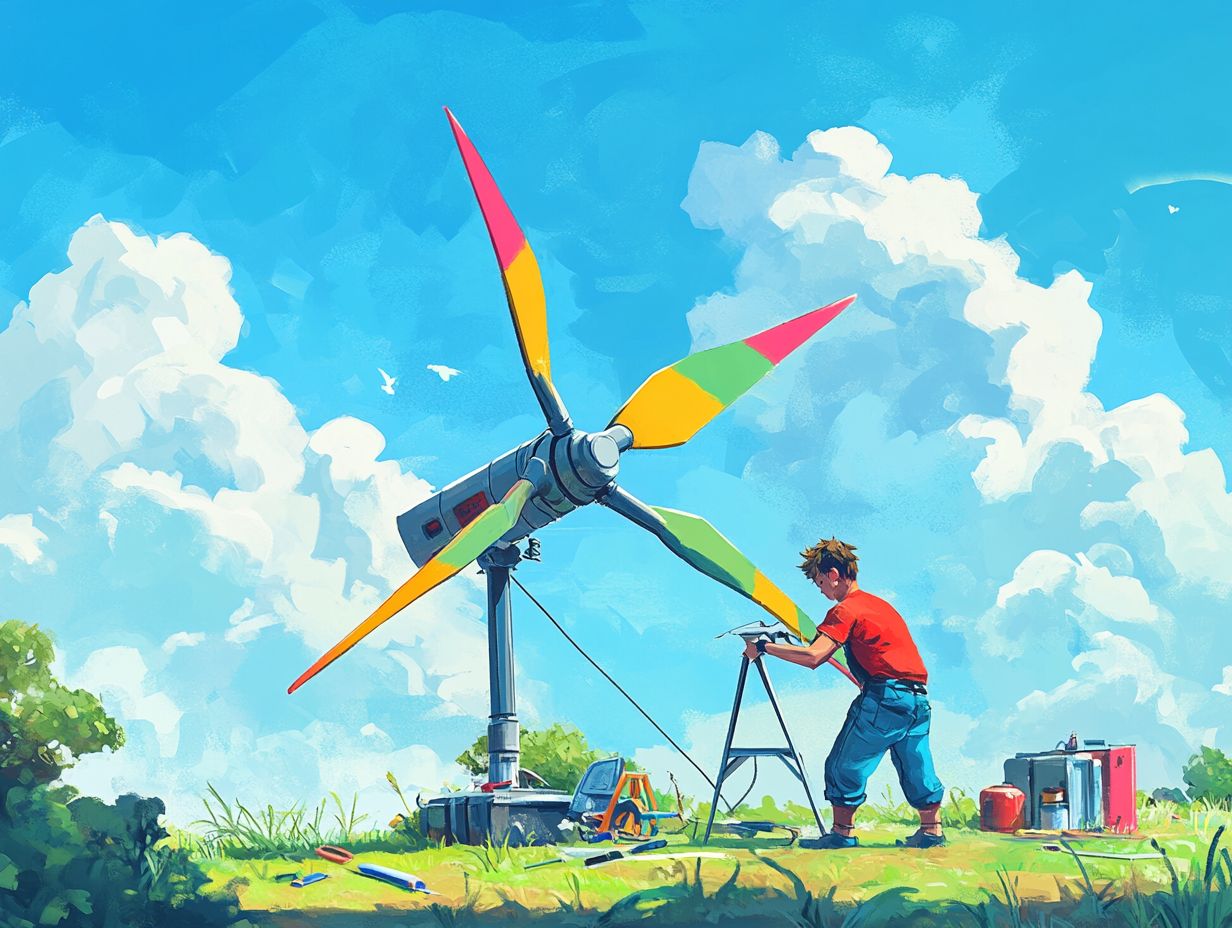
To build a wind turbine at home, gather affordable materials and tools. Start with PVC pipe for the turbine blades; it’s both lightweight and durable.
You ll need electrical cable for connections and metal tubing for support. Don t forget an electric drill for easy assembly.
Using a car alternator and fan clutch will enhance your generator’s efficiency. Each component plays a role in ensuring your wind generator operates efficiently while keeping costs down.
Necessary Components for Building a Wind Turbine
To build an effective wind turbine, you need essential components. These include vehicle batteries for energy storage and a charge controller to manage power input.
Ametek motors will drive the generator assembly, converting wind energy into electricity. The design and materials of your turbine blades are critical for capturing energy from varying wind speeds.
Using a deep-cycle battery, like a 6-volt golf cart battery, can improve energy storage. These components work together to keep the turbine running efficiently.
Vehicle batteries serve as a reliable energy reservoir, storing electricity generated during peak wind periods. The charge controller regulates energy flow and prevents overcharging.
The Ametek motors in the generator assembly efficiently convert kinetic energy from the spinning blades into electrical energy.
By optimizing the shape and pitch of the blades, you can boost the turbine’s performance. This allows it to harness wind power effectively, even in less-than-ideal conditions.
Step-by-Step Guide to Building a Wind Turbine
Building a homemade wind turbine is rewarding. You can undertake this project with a detailed, step-by-step guide.
Your project starts with designing your wind turbine blades and ends with assembling the generator. This is perfect for anyone looking to lower their energy bill and support a greener planet.
By following clear instructions, you ensure each component fits well. This optimizes your DIY wind generator, creating a reliable source of renewable energy for your needs.
Instructions and Tips for Each Step
When you construct a wind turbine, having detailed instructions and practical tips at your fingertips is essential. This will help you successfully assemble components like the mounting bracket, electrical cable, and winds turbine blades. Each step requires careful attention to detail. Securely fastening the turbine and optimizing the blade design for maximum wind capture are crucial steps. Additionally, using a car alternator and ensuring proper insulation of connections can vastly improve your wind turbine’s efficiency and longevity.
In the initial phase, securely fastening the mounting bracket to a stable foundation is key. This prevents wobbling and enhances durability. We recommend using high-quality bolts. As you move on to assembling the electrical components, ensure all connections are insulated to prevent short circuits, which can lead to efficiency losses.
For the blades, strategically angle them according to prevailing wind conditions. This adjustment can significantly influence performance. If you encounter unusual noise or decreased rotation speed, inspect all fastenings and check for debris obstructing movement.
By following these steps, you will streamline the construction process and enhance the turbine s operational efficiency!
Testing and Troubleshooting
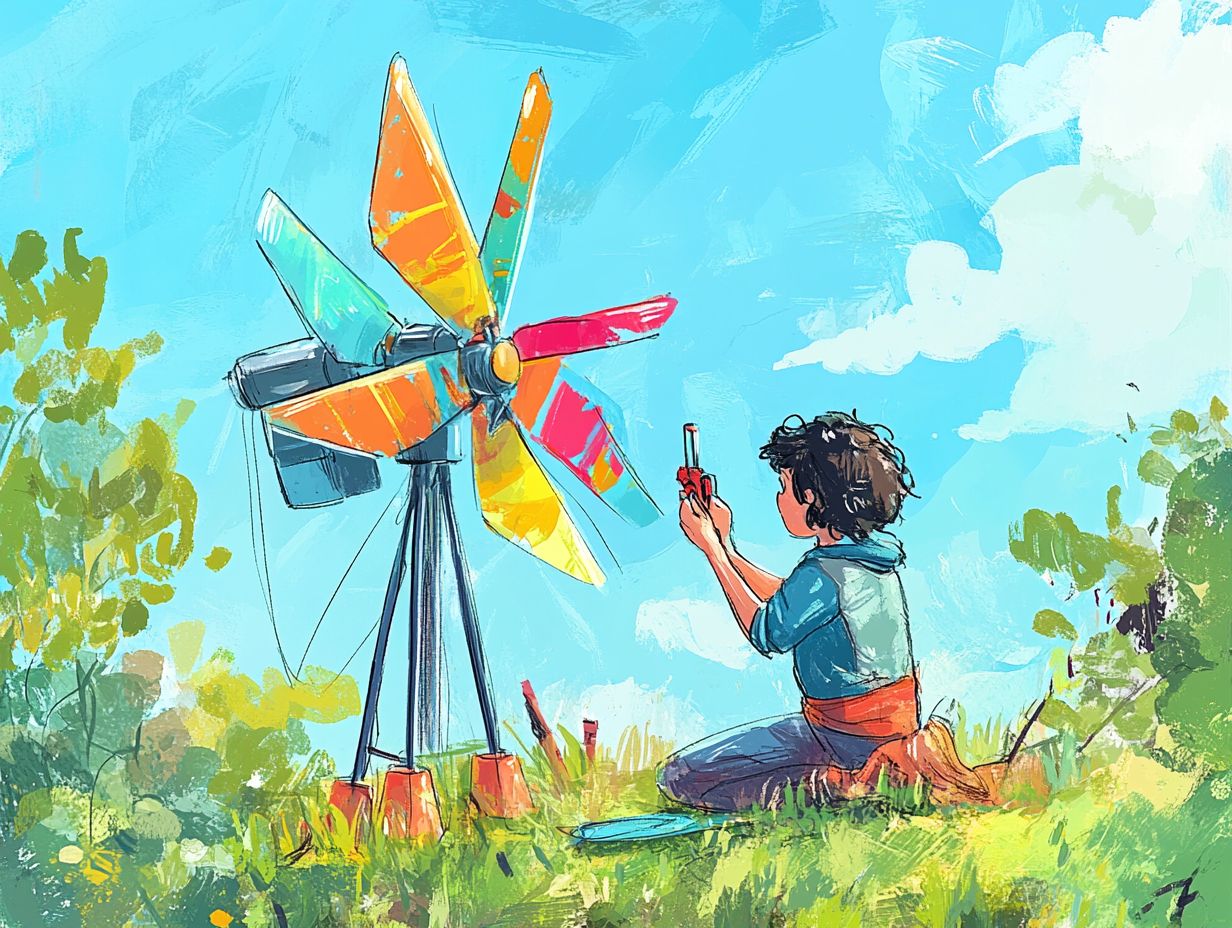
Testing and troubleshooting your wind turbine is an essential process. It ensures efficiency and performance, especially in changing conditions like varying wind speeds. Use an anemometer a tool that measures wind speed to accurately gauge the wind speed and make necessary adjustments.
Regular tests help you pinpoint issues with electrical connections, including those related to the electrical cable or battery minder. This proactive approach allows you to make timely repairs and adjustments, ultimately optimizing your energy production.
How to Test and Fix Common Issues
To ensure optimal performance, know how to test and fix common issues with your wind turbine. Focus on key components like the charge controller and Ametek motors. Regularly testing these components allows you to identify problems such as voltage drops or mechanical failures that could hinder your turbine’s efficiency. Having a battery minder is also beneficial for monitoring battery health and charge levels.
Evaluate the charge controller properly, as it regulates voltage output and protects the battery from overcharging. Begin by checking connections for signs of corrosion. Confirm that the settings align with your battery type. If using a deep-cycle battery or a 6-volt golf cart battery, ensure the charge controller settings are configured correctly.
Monitoring the motor s performance is equally important! Stay alert for any unusual sounds that might indicate mechanical friction or misalignment. When troubleshooting, inspect connections and tighten loose wires to resolve many issues.
Lastly, conduct a visual inspection of the turbine blades and bearings. This will help identify maintenance areas to enhance overall performance. Also, check components like the fan clutch and mounting bracket to ensure all parts function as intended.
Maintenance and Upkeep
Proper maintenance and upkeep are vital for the longevity and efficiency of your wind turbine. Regularly inspect components like the wind turbine blades, electrical cables, and mounting bracket.
By adhering to a structured maintenance schedule, you can safeguard the reliability and performance of your renewable energy system, whether it’s a homemade wind turbine or a commercial setup. For inspiration, check out these 5 inspiring DIY wind energy projects and start building your wind turbine today to harness the power of the wind!
Tips for Keeping Your Wind Turbine Running Efficiently
To keep your wind turbine running efficiently, adopt practical strategies. This includes closely monitoring wind speed with a device that measures wind speed, verifying that the battery minder is working correctly, and performing regular maintenance checks.
These proactive steps will help you maximize performance and maintain your renewable energy source, potentially lowering your energy bill. Regularly inspect the turbine blades for wear and tear. This will help you catch issues early and keep your turbine in top shape!
Keep a vigilant eye on the electrical connections, ensuring that the wiring remains intact. This will enhance safety and minimize potential disruptions to your energy production.
Embracing advanced monitoring technologies to track performance metrics is crucial. This data can highlight specific areas that need attention, ultimately leading to optimized operations. By actively participating in these practices, maintaining the efficiency of your wind turbine becomes not just achievable but a seamless part of its operation that reinforces sustainability and reliability.
Frequently Asked Questions
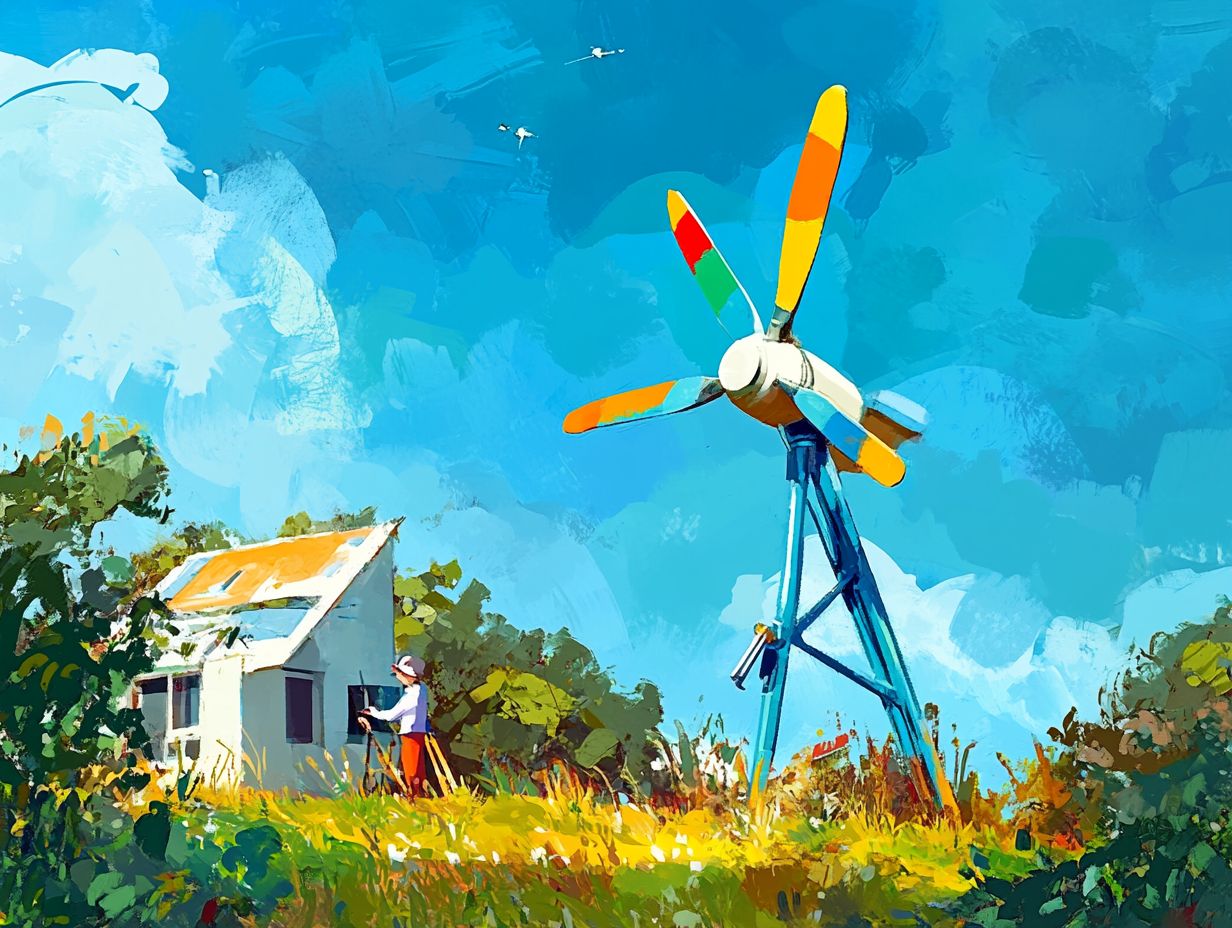
What materials do I need to create a wind turbine at home?
To create a wind turbine at home, you will need a DC motor, PVC pipes, a tower, a battery, blades, a charge controller, and some basic hand tools. You might also need inexpensive materials like two-inch tubing and metal tubing for the structure.
Do I need any special skills or knowledge to create a wind turbine?
No, creating a wind turbine at home is relatively easy and can be done by anyone with basic DIY skills and knowledge. There are also many online tutorials and guides available to help you through the process, including resources on building a DIY wind generator.
How much electricity can I generate with a homemade wind turbine?
The amount of electricity generated by a homemade wind turbine depends on factors such as wind speed, blade size, and the efficiency of the turbine. On average, a small wind turbine can generate enough electricity to power small appliances or charge a battery, such as six-volt golf cart batteries or deep-cycle batteries.
What is the ideal location to install a wind turbine at home?
The ideal location for a wind turbine at home is an open area with consistent and strong winds, such as an off-grid cabin. Avoid placing it near tall trees or buildings that can block the wind and reduce the efficiency of the turbine.
How much does it cost to build a wind turbine at home?
The cost of building a wind turbine at home can vary depending on the materials used and the size of the turbine. On average, it can cost anywhere from $200 to $1,000. However, this is significantly cheaper than buying a pre-made wind turbine, and you can use items like vehicle batteries and a fan clutch to keep costs down.
Are there any safety precautions I should take when building a wind turbine at home?
Yes, it is important to take safety precautions when building a wind turbine at home, as it involves working with electricity and moving parts. Make sure to wear protective gear and follow all safety instructions in the tutorials or guides you are using. You might also want to consult publications like the Journal of Chemical Education or organizations such as the American Association of Chemistry Teachers for additional safety insights.


